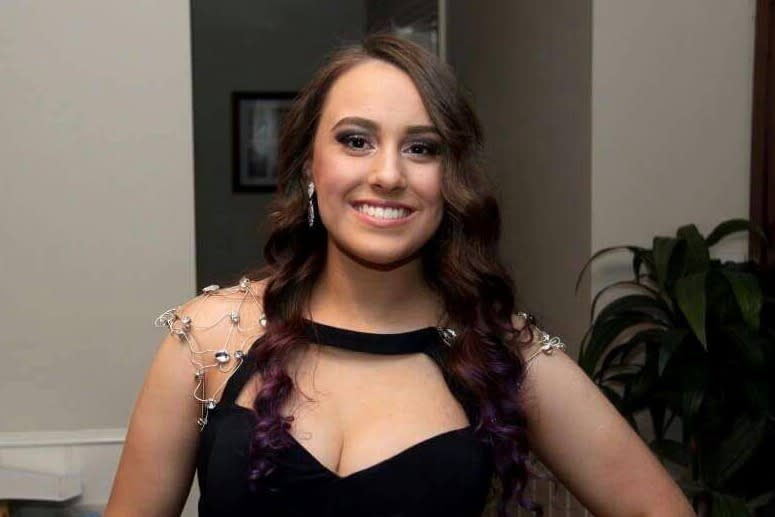Krystal Browitt identified as the ninth Australian to die in New Zealand volcano disaster
Melbourne woman Krystal Browitt has been confirmed as the ninth Australian to have died in the New Zealand volcanic eruption as divers continue to search for two bodies near White Island.
NZ police publicly released the 21-year-old's name after her family was notified on Saturday.
It takes the official death toll to nine, with a presumptive toll of 16.
Nine Australians are confirmed dead, two are presumed to have died and 13 are in hospital with severe burns.
Some 47 people, including 24 Australian citizens and four permanent residents, were on the island when the volcano erupted on Monday.

Meanwhile, police and navy divers dealt with low visibility and dead fish in contaminated waters off the volcanic island in their attempt to find a seventh and eighth body.
The ground search was not resumed on Saturday, as authorities consider the next steps in their operation to retrieve eight bodies.
The high-stakes recovery mission to Whakaari's ash-covered surface flew out six bodies on Friday, much to the relief of families.
Police have vowed to continue their search until all eight bodies have been recovered.
"The assurance that we give to family and whanau (extended community) is that we will continue to put every effort into locating the remaining two missing," police commissioner Mike Bush said.
A debrief following Friday's operation has prompted a focus on nearby waters.
Deputy commissioner Mike Clement told AAP there had been nine divers, working to a buddy system, in the water since 7am.
"We learned some stuff yesterday as a result of being on the island," he said.
"The purpose of the planning day today is to work through the scenarios, with that eighth person, where they could be.
"We've got enough evidence to justify deploying that dive squad and the navy dive squad this afternoon."
The recovery operation is now focused on a ravine that carries water off the island.
"We know that we've got two bodies missing," Mr Clement continued.
"And we haven't quite got the detail yet but it's possible that there's been, quite heavy rain since Monday afternoon.
"The evidence suggests they're in that ravine but they're not there and they haven't been there since we started our (surveillance) overflights."
The seventh body was sighted in the water in the aftermath of the blast but unreachable due to swells.

On Saturday, visibility in the contaminated water was between zero and two metres.
Divers, who saw the dead sea creatures on the water's surface and onshore, required specialised protective equipment and decontamination with fresh water each time they surfaced.
Mr Clement said police weren't ready to rule out the eighth body being on land, saying he "would leave either scenario open".
"But if it's on land, it's not visible on the surface. So we've got to work through the possibilities with regard to where it might be."
The six recovered bodies were flown to Auckland Hospital, where chief coroner Judge Deborah Marshall leads the identification process.
Deputy Commissioner John Tims, the Wellington-based operations commander, warned anxious families and loved ones that the "process is stringent and can take some time".
"This is a long and complex process and we are working as quickly as possible to return loved ones to their families," he said.
How bodies are being identified after New Zealand volcano tragedy
Video shows the moment tour guide realises volcano could erupt any second
'Like a jet plane taking off': What it's like surviving a NZ volcano eruption
The eight families spent time with the six bodies – which were in coffins – at Whakatane airport on Friday night before they were taken to Auckland.
On Saturday morning, New Zealand's geological monitoring agency GNS Science slightly downgraded the threat of a further eruption within the next 24 hours to 35 to 50 per cent.
This is the lowest chance of further eruption since Monday, but still drastically higher than before the initial blast.
Do you have a story tip? Email: newsroomau@yahoonews.com.
You can also follow us on Facebook, Instagram and Twitter and download the Yahoo News app from the App Store or Google Play.



